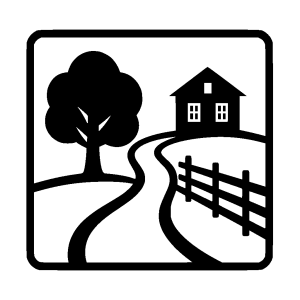
13. The watermill
Bergby water mill has been on this site since the end of the 19th century. At the turn of the 20th century, the mill was run by farmer Erik Ersson. The natural rapids were previously considerably stronger and were called ’Juliaforsen’. The mill is modern for its time – it has a vertical water wheel. There were previously several water mills in the area. But they were probably simple water mills with horizontal water wheels. When Bergby windmill was rebuilt and modernized (see sign no. 5 ), the old water mill became redundant. It was taken out of use in 1929 and soon dismantled, only the foundation remains today.
In 1894, Brita Stina Olsdotter bought and moved an old timbered semi-detached cottage from Nordanskog to this location. The cottage was expanded in 1907 with an upper floor that was furnished with summer rooms. In 1927, the widow Julia Olsson from Västerkulla Gård moved down to the house, which was then nicknamed ’ Julia’s ’. The property was actually called Kristinedal. During the 1930s and 40s, a small boarding house movement was run here in the summers. Well-off city dwellers came here to rest by the water and get some rural peace. Julia lived in the house and the guests in the summer rooms upstairs.
The author Vilhelm Moberg lived from 1940 until his death in 1973 on the other side of Väddöviken at Söderängs Gård in Tomta. He converted an old village forge into his writing cabin, where he wrote, among other things, The Emigrants and My Swedish History . It is said that he often swam over to Julia’s to play cards with the gentlemen upstairs. After a lot of card play – and some drinking – he got a rose in the oak! The farm today bears the name ’Sjöhaga’.

